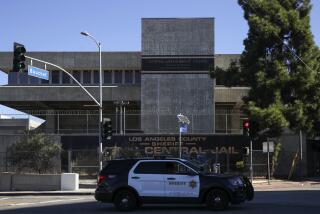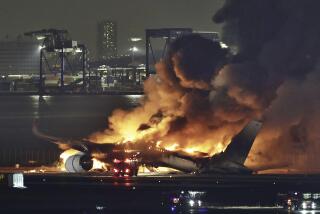Mir Blaze Prompts Shuttle to Conduct Fire Experiments
KENNEDY SPACE CENTER, Fla. — Back in space for a sizzling encore, Columbia’s astronauts began setting fires aboard the shuttle on Wednesday in hopes of learning more about the spread of flames in weightlessness.
The seven-member crew also got to see the scene of the worst fire ever in space--Russia’s broken-down Mir station, glinting in the sunlight as it passed within 70 miles of the shuttle.
In the first of 144 combustion tests planned for the 16-day mission, astronaut Janice Voss ignited a small amount of hydrocarbon fuel in a triple-sealed chamber to observe soot production.
“We’re ready to start burning things,” Voss told ground controllers.
Scientists say the combustion research will help improve spacecraft safety and reduce air pollution on Earth.
Mir’s fire in February--a solid-fuel oxygen generator ignited, shooting out 2-foot flames and spewing chunks of molten metal--pointed out the need for a better understanding of flames in weightlessness. NASA astronaut Jerry Linenger, who was on Mir at the time, said he was stunned at how quickly smoke filled the station.
During their aborted flight in April, Columbia’s astronauts got to set only 14 fires before they had to rush home because of a defective power generator; this is a repeat of that mission.
Voss said some of the fire experiments were redesigned a little between flights and already have led to improved results.
The shuttle astronauts also spent their first full day in orbit growing protein crystals and firing up a metal-melting furnace that can operate at up to 3,000 degrees.
“All of us are marveling at how much it feels like we just left here yesterday,” Voss said. “It’s been much easier to get back into the swing of things.”
Altogether, Columbia’s bus-size laboratory contains 33 experiments.
More to Read
Sign up for Essential California
The most important California stories and recommendations in your inbox every morning.
You may occasionally receive promotional content from the Los Angeles Times.










